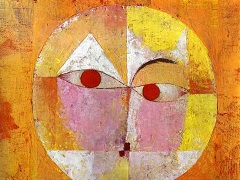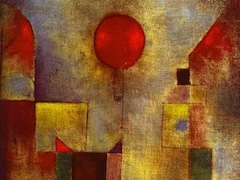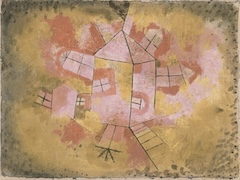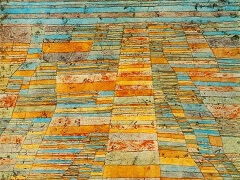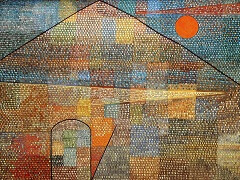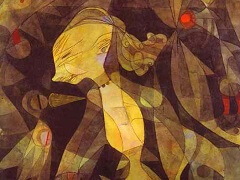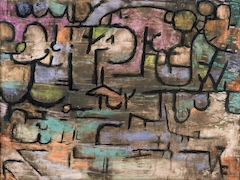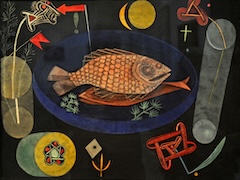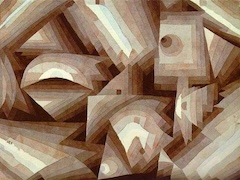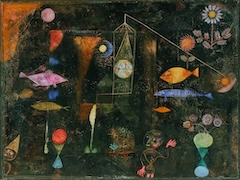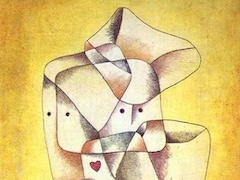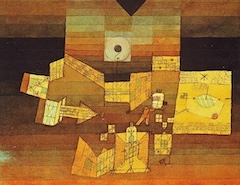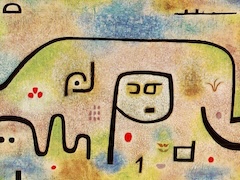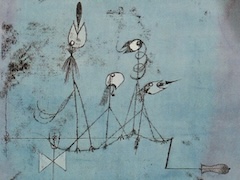Mask of Fear, 1932 by Paul Klee
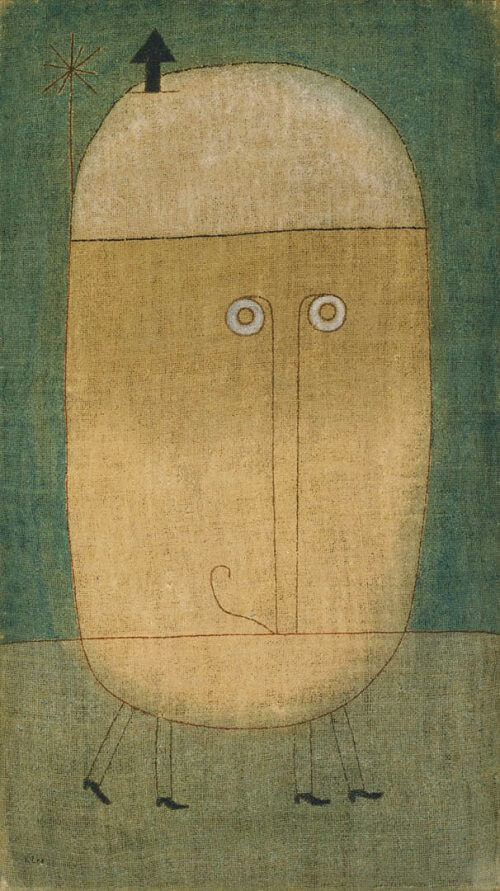
This curious personage, with four small spindly legs supporting a visage of stunned eyes and a quizzical smirk or handlebar moustache, offers a satiric take on the work's grim title. Inspired by a Zuni war god sculpture
that Klee saw at an ethnological museum, it was painted on the eve of Hitler's assumption of power in Germany, a year after Klee left the Bauhaus for a professorship at the Kunstakademie Düsseldorf. The two sets of
legs suggest that two figures might be supporting and hiding behind this monumental carnival-style mask, an arrangement related to Klee's metaphorical statement, "The mask represents art, and behind it hides man."

